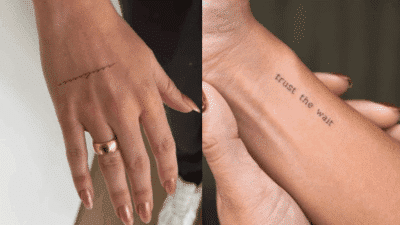

The allure of a tattoo is as ancient as humanity itself, a canvas of personal narrative etched onto the skin. Among the myriad designs, the rose stands as an undisputed monarch, revered for its profound symbolism and undeniable beauty. Yet, within the realm of rose tattoos, a particular style has captivated enthusiasts and artists alike: the realistic rose tattoo. This isn’t merely a drawing of a rose; it is a breathtaking illusion, a hyper-realistic depiction that seems almost three-dimensional, as if a freshly bloomed flower has been delicately pressed onto the skin. Mastering this art form requires an extraordinary blend of artistic talent, technical precision, and an intimate understanding of light, shadow, and botanical detail.
The pursuit of a realistic rose tattoo is a journey into the heart of tattoo artistry, demanding meticulous planning, an experienced hand, and a commitment to preserving the integrity of the design for years to come. This comprehensive guide will navigate you through every facet of commissioning and caring for a realistic rose tattoo, from understanding its profound appeal to selecting the ideal artist and ensuring its longevity. Prepare to delve into the intricate world where ink meets skin, transforming a simple concept into a living masterpiece.
Pros and Cons
| Pros | Cons |
|---|---|
| – Stunning, lifelike aesthetic | – High cost due to complexity and artist skill |
| – Deep symbolic meaning | – Requires multiple, often long, sessions |
| – Highly customizable and unique | – Finding a truly skilled artist can be challenging |
| – Stands out with intricate detail | – Less forgiving of poor execution |
| – Long-lasting visual impact (with proper care) | – Can require touch-ups over time to maintain detail |
The Enduring Allure of the Rose in Tattoo Art

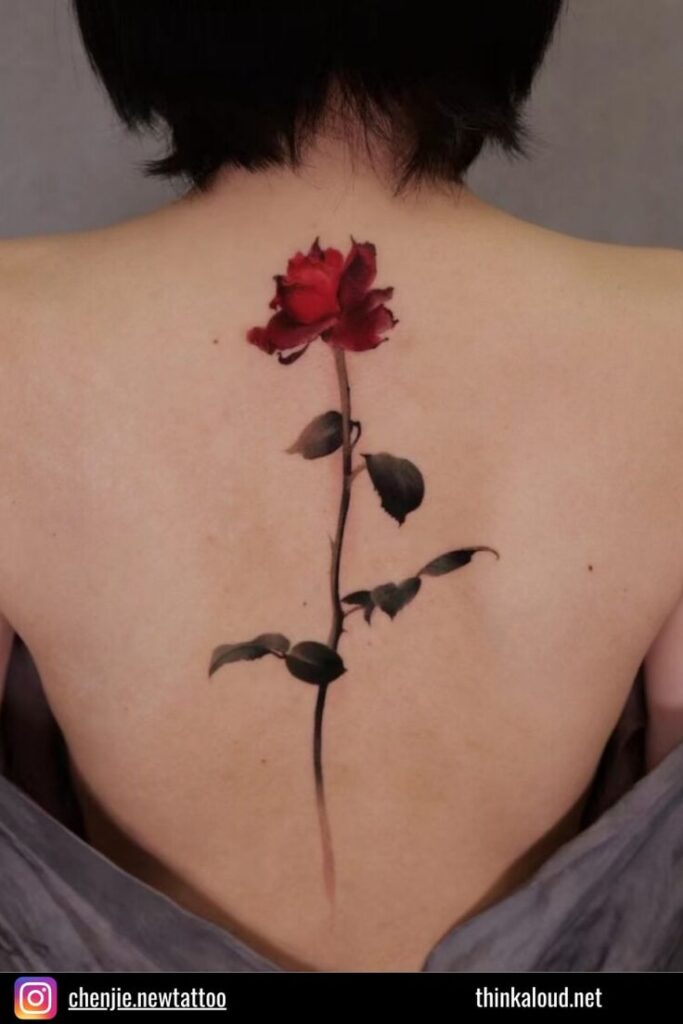
The rose, in its countless forms and colors, has been a central figure in human culture for millennia. From ancient mythology to contemporary literature, it symbolizes an extraordinary range of emotions and concepts: love, passion, beauty, hope, secrecy, and even sorrow. This rich tapestry of meaning makes it a profoundly popular choice for body art, allowing individuals to imbue their tattoo with a deeply personal narrative.
A red rose, for instance, is universally recognized as a symbol of deep love and romance, while a white rose often signifies purity, innocence, or remembrance. Yellow roses speak of friendship and joy, pink roses convey grace and admiration, and a black rose, though botanically rare, is a poignant emblem of loss or rebellion. The thorns, an intrinsic part of the rose, further add to its complexity, representing protection, loss, or the understanding that true beauty often comes with challenges. This multifaceted symbolism is a primary driver behind its timeless appeal, allowing each wearer to find a unique connection to their chosen bloom. For more insights into symbolic tattoos, explore various tattoo ideas with meaning.
Beyond its symbolic depth, the rose possesses an inherent aesthetic beauty that translates exceptionally well into tattoo art. Its intricate petal structure, delicate curves, and dynamic form offer an endless source of inspiration for artists. When rendered with realism, these attributes come alive on the skin, creating a focal point that is both visually striking and emotionally resonant.
Defining Realism in Tattoo Art


Realism in tattooing is a demanding genre, characterized by its commitment to depicting subjects as they appear in real life. It moves beyond stylized interpretations, focusing instead on capturing the nuanced details that create an illusion of reality. For a realistic rose tattoo, this means much more than just drawing a rose shape. It involves replicating:
- Photographic Accuracy: The ability to render an image with the precision and detail of a photograph.
- Depth and Dimension: Using light, shadow, and perspective to create the illusion of a three-dimensional object on a two-dimensional surface.
- Texture: Conveying the soft, velvety feel of petals, the sharpness of thorns, or the delicate sheen of a dewdrop.
- Color Gradation: Seamless transitions between hues, accurately reflecting how light interacts with the rose’s surface.
- Intricate Details: Every vein on a leaf, every fold in a petal, every tiny imperfection that makes a real rose unique.
The goal is to create a piece of art that, at first glance, might be mistaken for an actual rose placed on the skin. This level of illusion requires immense skill and an almost obsessive attention to detail from the tattoo artist.
Key Elements of a Masterful Realistic Rose Tattoo
Achieving hyperrealism in a rose tattoo is a complex endeavor, requiring an artist to master several critical components. Understanding these elements will empower you to better communicate your vision and appreciate the skill involved.
Botanical Accuracy
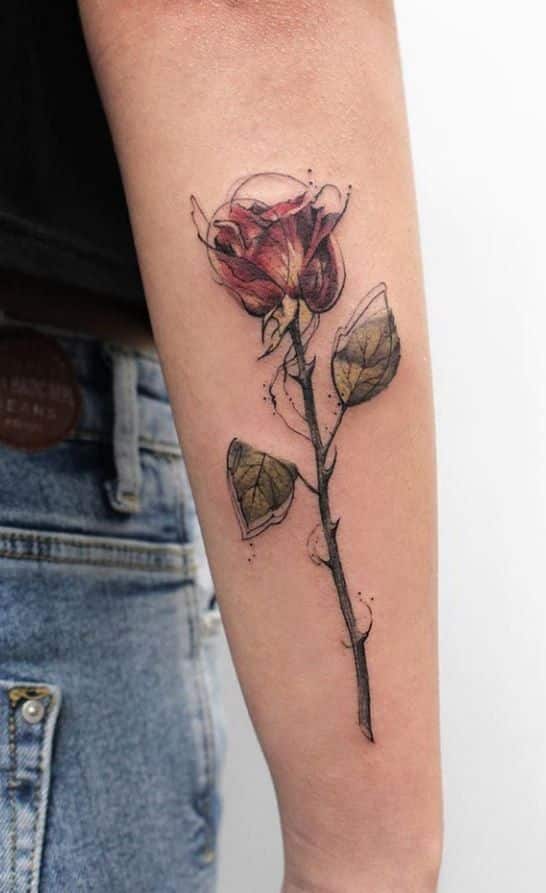
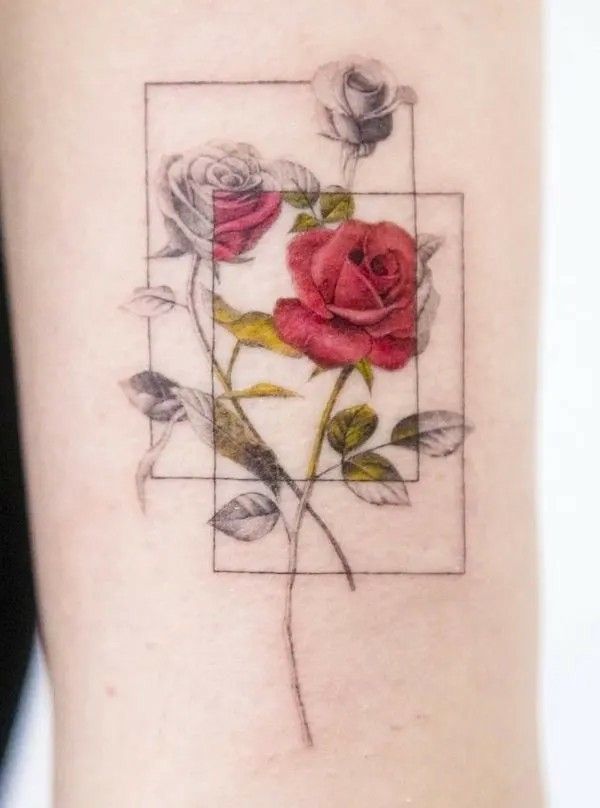
A realistic rose begins with a deep understanding of the flower’s anatomy. The artist must be able to accurately portray:
- Petal Structure and Overlap: Each petal has a unique curve, and their arrangement creates intricate patterns. The way they overlap and layer is crucial for achieving depth.
- Thorns: Not just sharp points, but rendered with individual variations, texture, and shadows that give them volume.
- Leaves and Stem: Veining, serrated edges, naturalistic bends, and the subtle variations in color that distinguish a healthy leaf.
- Dew Drops or Water Beads: If included, these elements add an incredible layer of realism, reflecting light and distorting the image beneath them like tiny lenses.
An artist with a strong grasp of botany will create a rose that feels authentic, not generic.
Light and Shadow: The Sculptors of Form
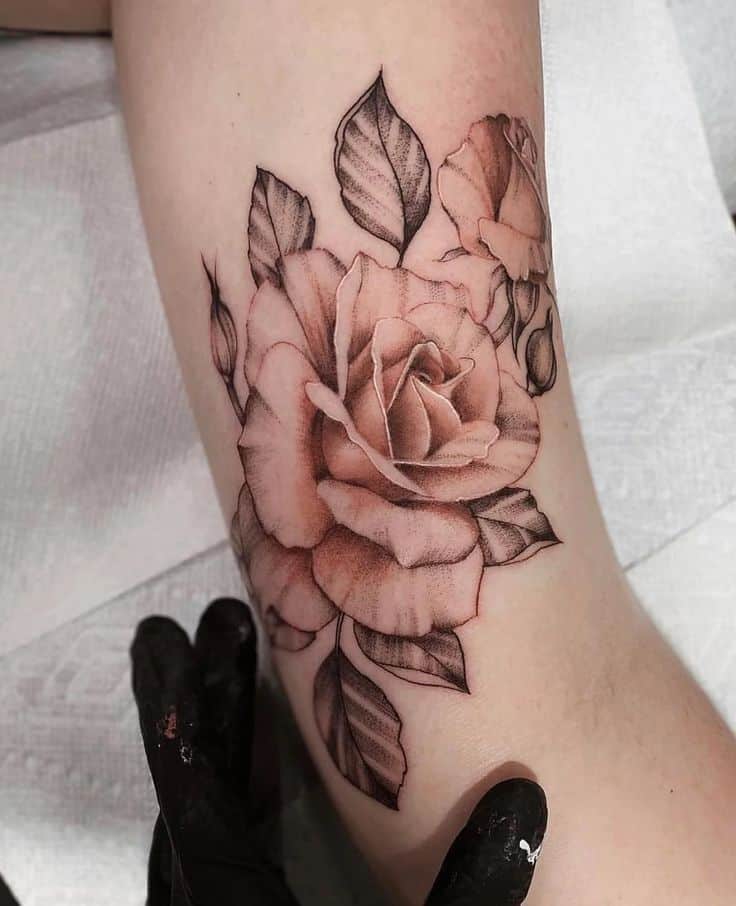
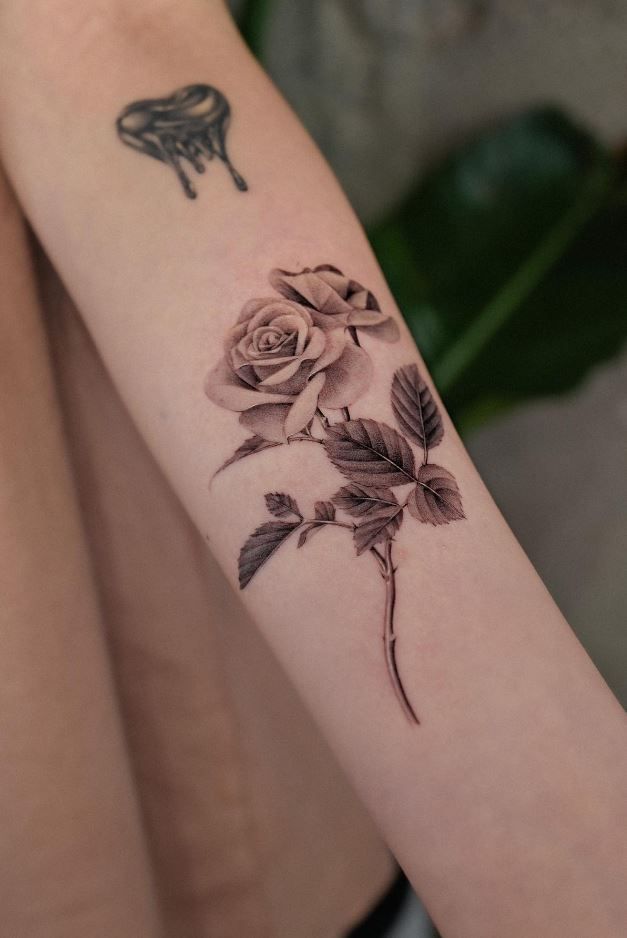
Perhaps the most critical element in any realistic tattoo is the skillful application of light and shadow. These are the tools that sculpt form and create depth.
- Highlights: Brightest areas where light directly hits, often giving a glossy or dewy appearance.
- Mid-tones: The main body of color, showing the natural hue of the rose.
- Shadows: Areas where light is blocked, creating contrast and pushing elements back, giving the petals their rounded, volumetric appearance.
- Reflected Light: Subtle light bouncing off adjacent surfaces, adding realism to shadowed areas.
The interplay of these elements transforms a flat image into a three-dimensional spectacle. Without proper light and shadow, even the most detailed drawing remains flat.
Color Theory and Application
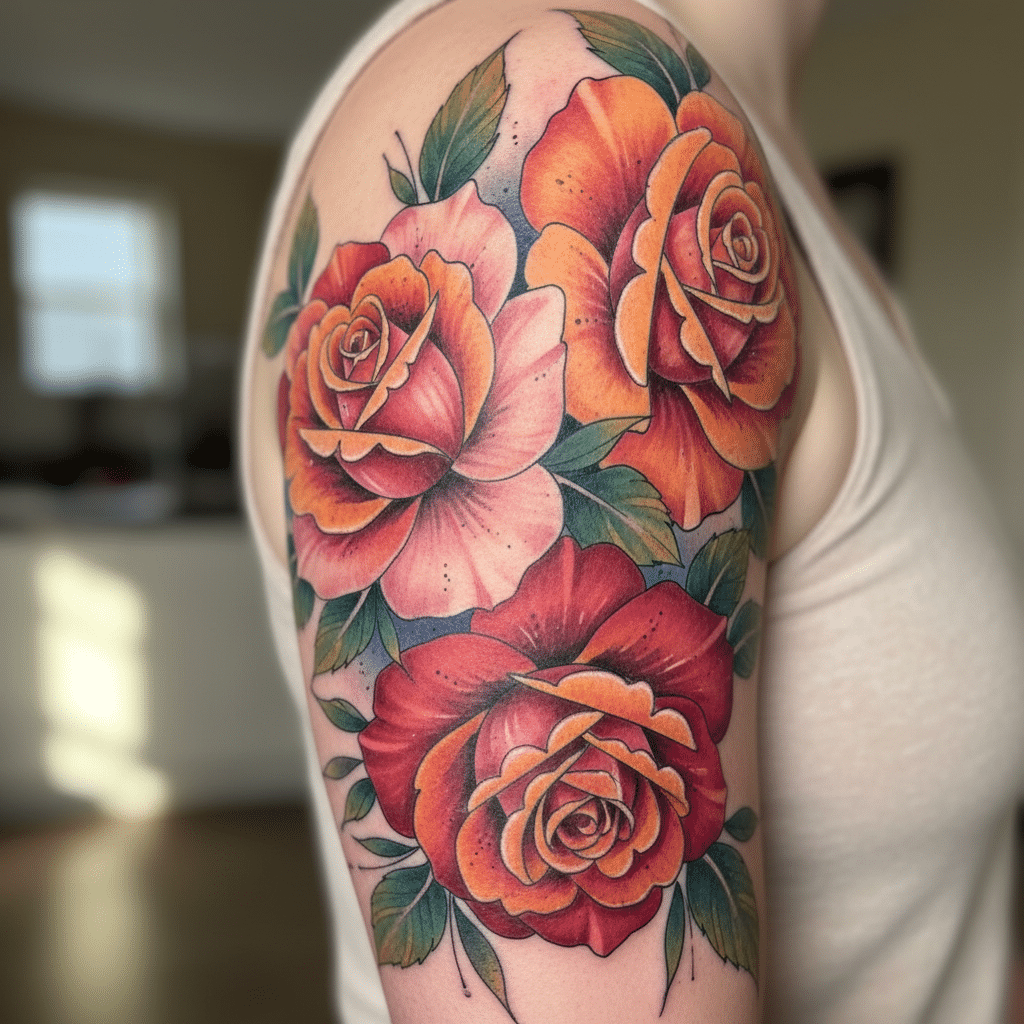

For color realistic rose tattoos, the artist’s ability to manipulate pigments is paramount.
- Vibrant Hues and Subtle Gradations: Roses aren’t uniform in color. Petal edges might be lighter, centers deeper, and natural variations exist even within a single petal.
- Blending: Seamless transitions between colors are essential to avoid harsh lines and create a smooth, natural look.
- Saturation: The intensity of the color must be controlled to prevent the tattoo from looking cartoonish or faded too quickly.
- Ink Pigment Choice: High-quality, vibrant pigments that hold well in the skin are crucial for longevity and realism.
Black and grey realism also relies heavily on “color” theory, utilizing a wide spectrum of grey washes and opaque black to create form, depth, and contrast, often mimicking the look of a black and white photograph.
Texture
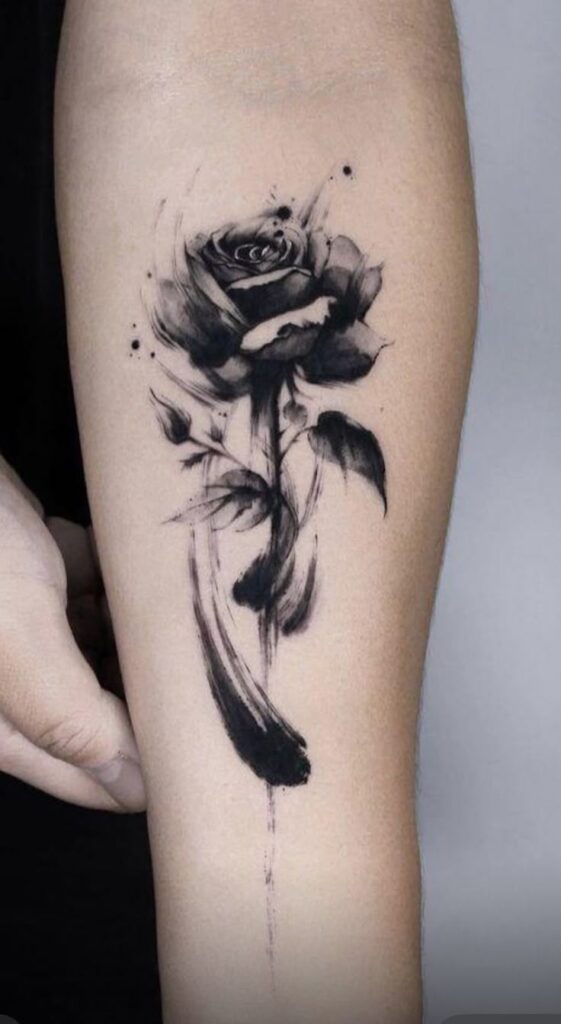
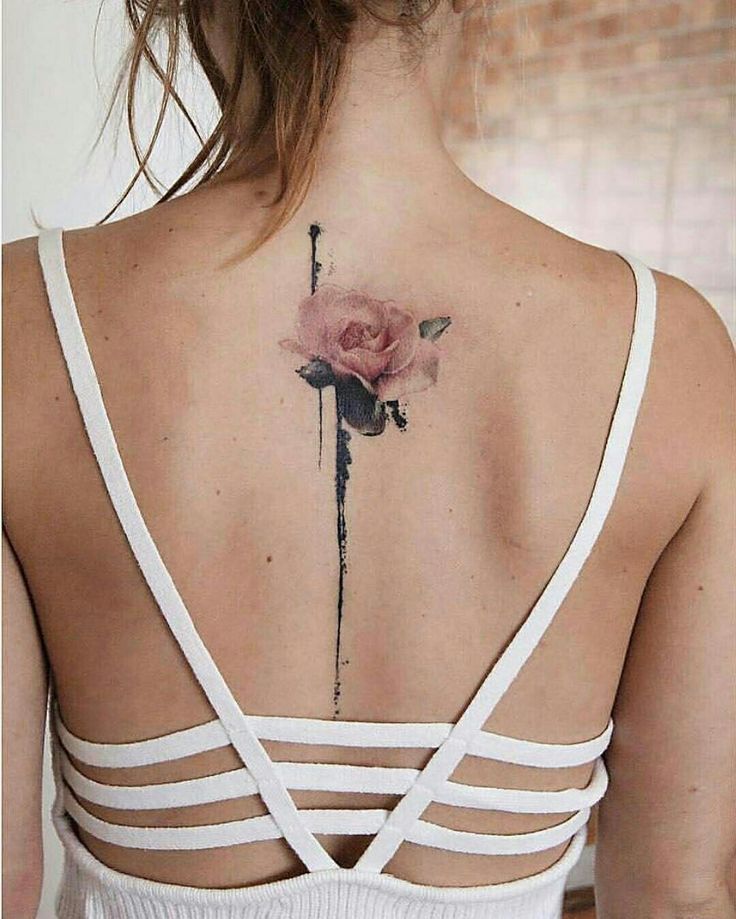
The ability to convey texture is what truly elevates a realistic rose.
- Petal Softness: Achieved through delicate shading and smooth color transitions.
- Thorn Hardness: Contrasting sharp lines and darker shading.
- Leaf Veining: Fine lines and subtle differences in shading to show the raised veins.
- Dewdrop Sheen: Tiny, precise highlights that catch the light.
When executed flawlessly, the viewer almost expects to feel the different textures if they were to touch the skin.
Composition and Placement
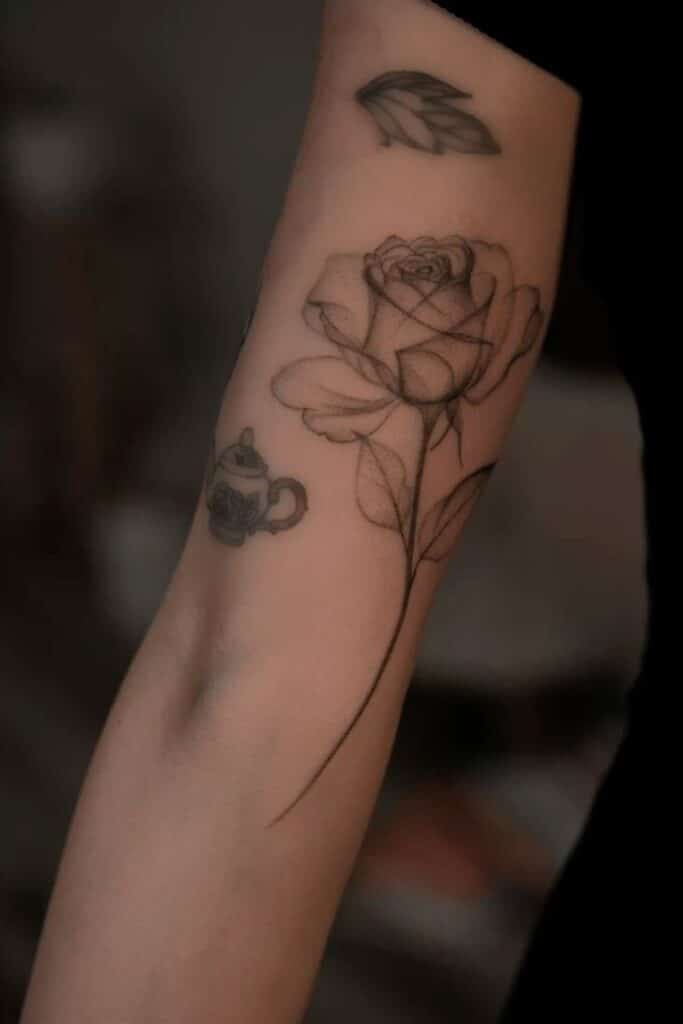

The way the rose is arranged on the body, or its composition, plays a significant role in its overall impact.
- Flow with Anatomy: A realistic rose tattoo should complement the natural curves and contours of the body part it adorns. A rose flowing with a bicep or wrapping around a thigh will look more dynamic than one simply plastered on flat skin.
- Perspective: The angle from which the rose is viewed can dramatically alter its appearance and realism.
- Background Elements: While the rose is the star, subtle background elements like soft blurs, abstract shapes, or a hint of foliage can enhance its realism without distracting.
Consider how the tattoo will look from different angles and how it will interact with your movement.
Choosing Your Artist: The Most Crucial Step
Entrusting your skin to a tattoo artist is a significant decision, especially for a complex piece like a realistic rose. This is not a task for an inexperienced hand.
Portfolio Review: Focus on Realism
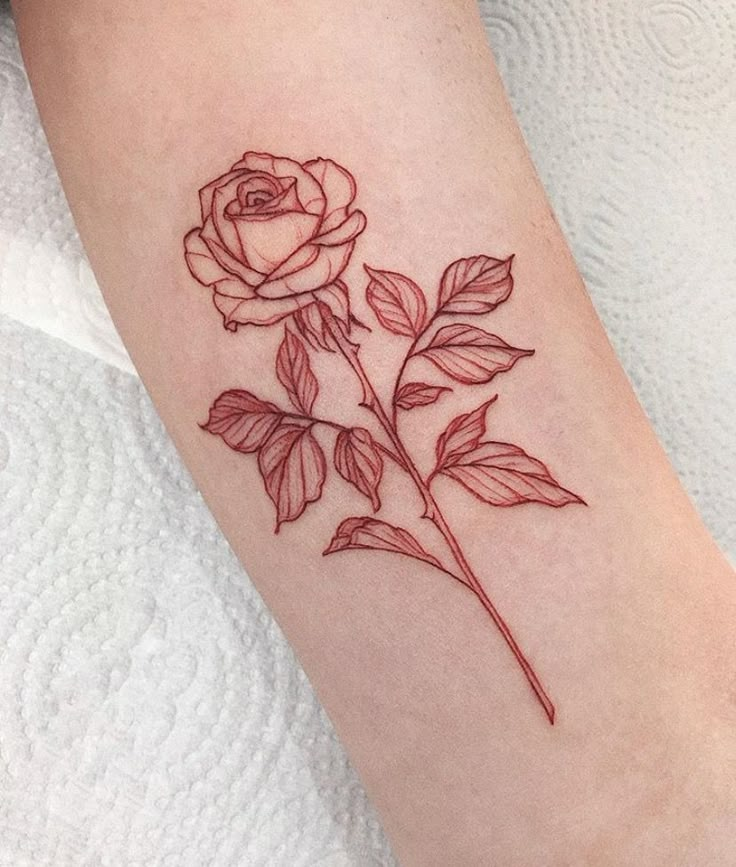
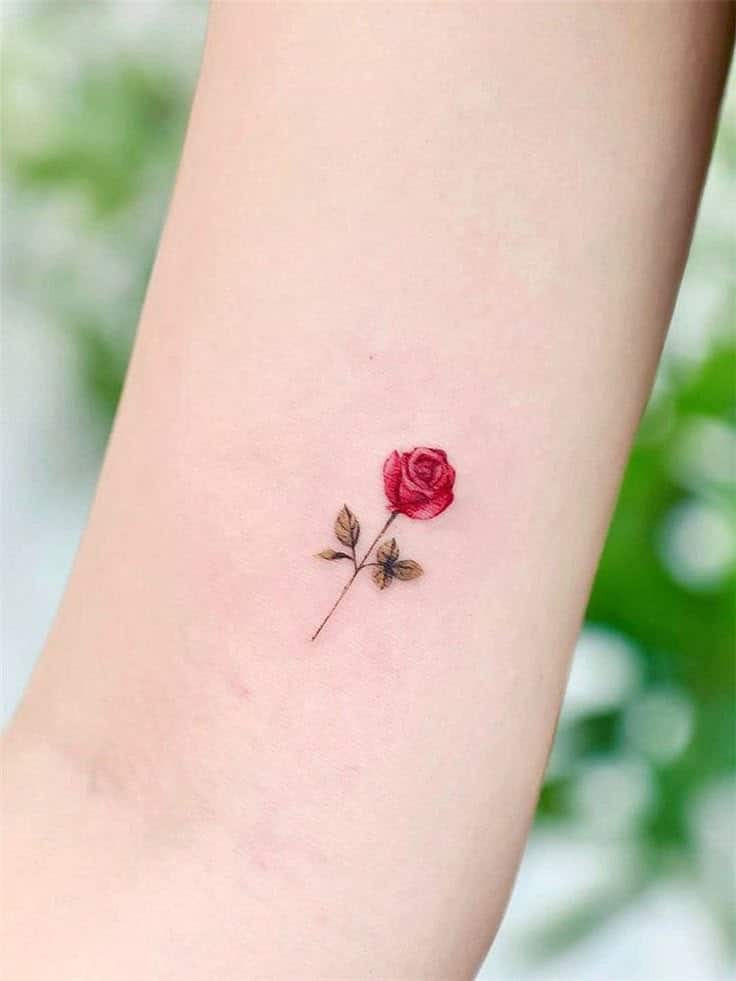
When evaluating artists, their portfolio is your most valuable resource. Look for:
- Dedicated Realism Work: Does their portfolio heavily feature realistic tattoos? Not just any tattoos, but specifically realism.
- Floral Realism: Does it include realistic flowers, particularly roses? This shows their specific expertise.
- Before and After/Healed Photos: Crucially, ask to see healed photos of their realistic work. A tattoo can look amazing fresh, but how it settles into the skin and retains its detail after healing is the true test of an artist’s skill and technique.
- Consistent Quality: Does every piece in their realistic portfolio meet a high standard, or are there inconsistencies?
An artist specializing in traditional or neo-traditional styles, while skilled, may not possess the particular techniques required for hyperrealism.
Experience and Specialization
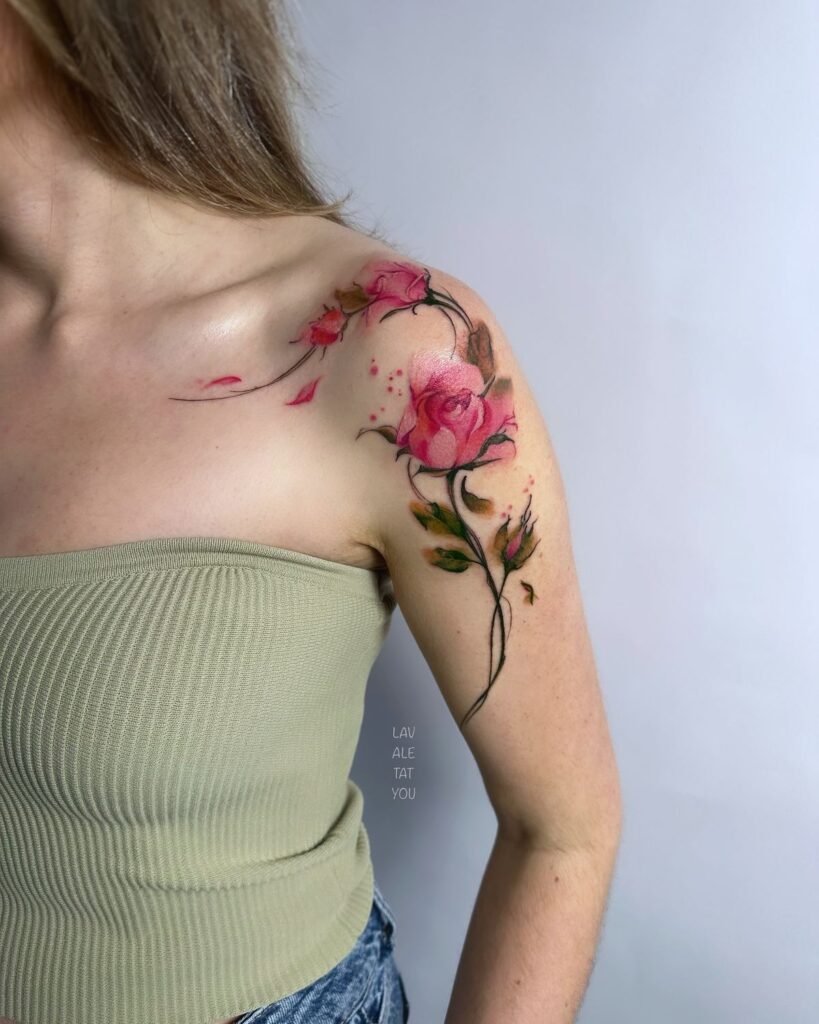
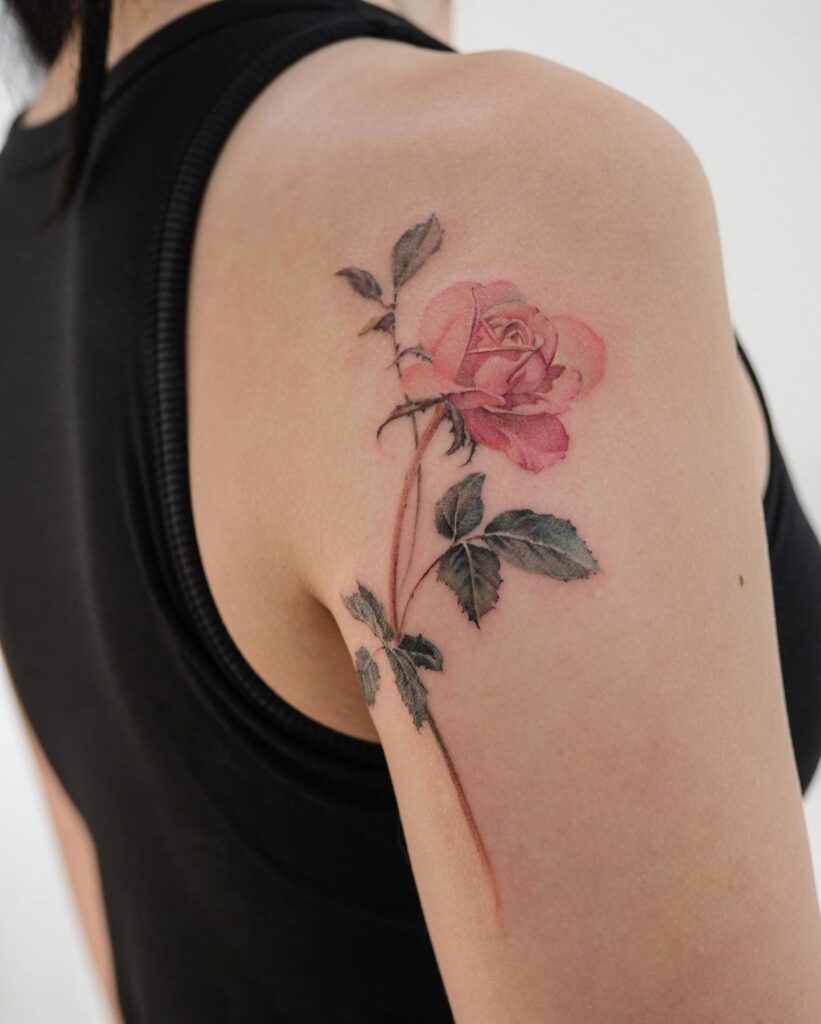
Seek out artists who have dedicated years to honing their realism craft. Many top artists specialize in a specific niche, such as black and grey realism, color realism, or even hyperrealistic flora and fauna. These specialists often have a deeper understanding of the techniques, needles, and pigments best suited for your desired outcome.
The Consultation Process


A professional consultation is non-negotiable. During this meeting, you should:
- Discuss Your Vision: Clearly articulate your ideas, preferred colors, size, placement, and any specific elements you want. Bring reference photos of actual roses that inspire you.
- Artist’s Input: A good artist will offer expert advice on feasibility, placement, and design adjustments to ensure the best possible outcome. They may suggest modifications for better longevity or aesthetic appeal.
- Review Design Concepts: While the final design might not be ready, they should be able to sketch initial ideas or show you similar past work.
- Discuss Pricing and Timeline: Get a clear understanding of the estimated cost and how many sessions will be required.
- Gauge Rapport: It’s vital to feel comfortable and confident with your artist. You’ll be spending many hours together.
Hygiene and Professionalism
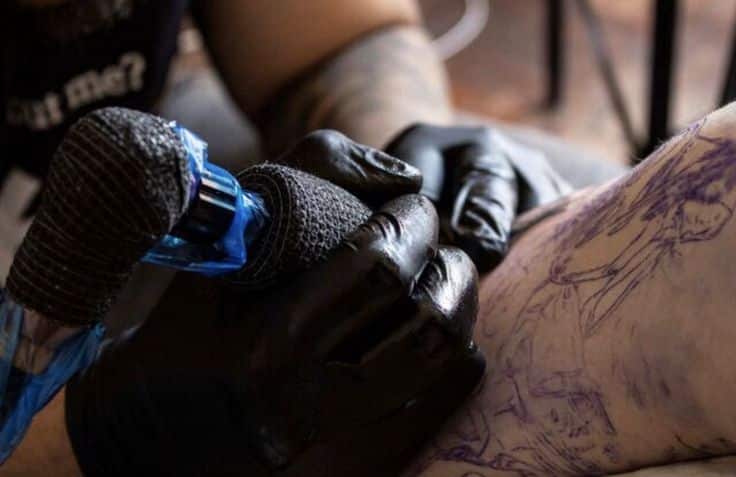
Ensure the studio adheres to the highest standards of hygiene. Look for:
- Cleanliness: The studio should be immaculately clean, well-lit, and organized.
- Sterilization Practices: Artists should use new, sterile needles for every client, wear gloves, and disinfect equipment properly.
- Licensing: Verify that the artist and studio are licensed and certified according to local regulations.
Never compromise on hygiene; your health and safety are paramount.
The Design Process: Bringing Your Vision to Life
Once you’ve chosen your artist, the collaborative design process begins, translating your ideas into a tattooable artwork.
Reference Material
Providing high-quality reference photos is crucial. Don’t just show an image of another tattoo; provide actual photographs of roses you admire. This allows the artist to capture the natural essence you’re seeking. Consider:
- Lighting: Photos with good natural lighting show petal depth and color variations best.
- Angle: Different angles (full bloom, partial bloom, side profile) can be used to create a dynamic composition.
- Specific Details: If you love a particular type of thorn or a specific leaf pattern, point it out.

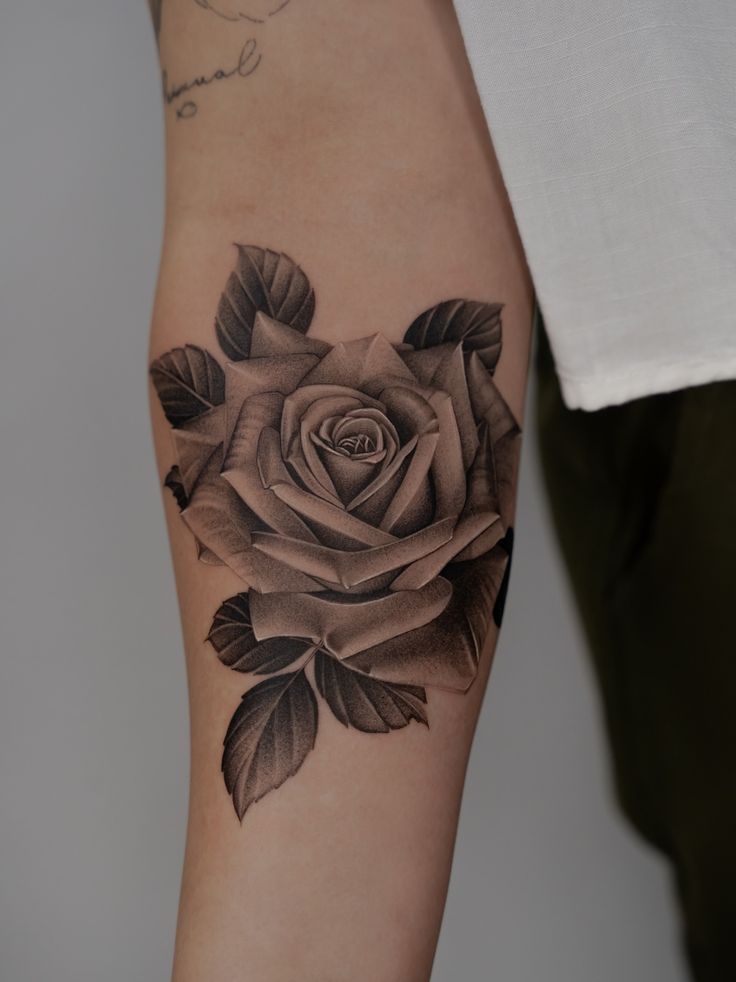
Collaboration with Your Artist
Your artist will use your references and ideas to create a custom design. This often involves:
- Digital Rendering: Many realistic artists use digital tools to compose the tattoo, allowing them to manipulate scale, position, and elements precisely.
- Feedback Rounds: Be prepared to provide feedback on the initial design. This is your chance to refine details and ensure it aligns with your vision. Trust your artist’s expertise, but don’t be afraid to voice your preferences.
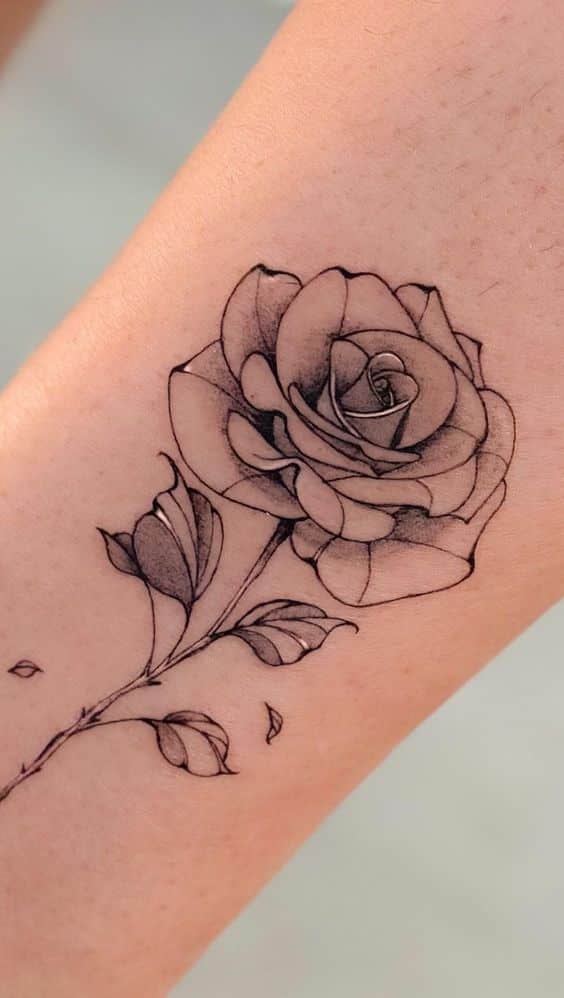
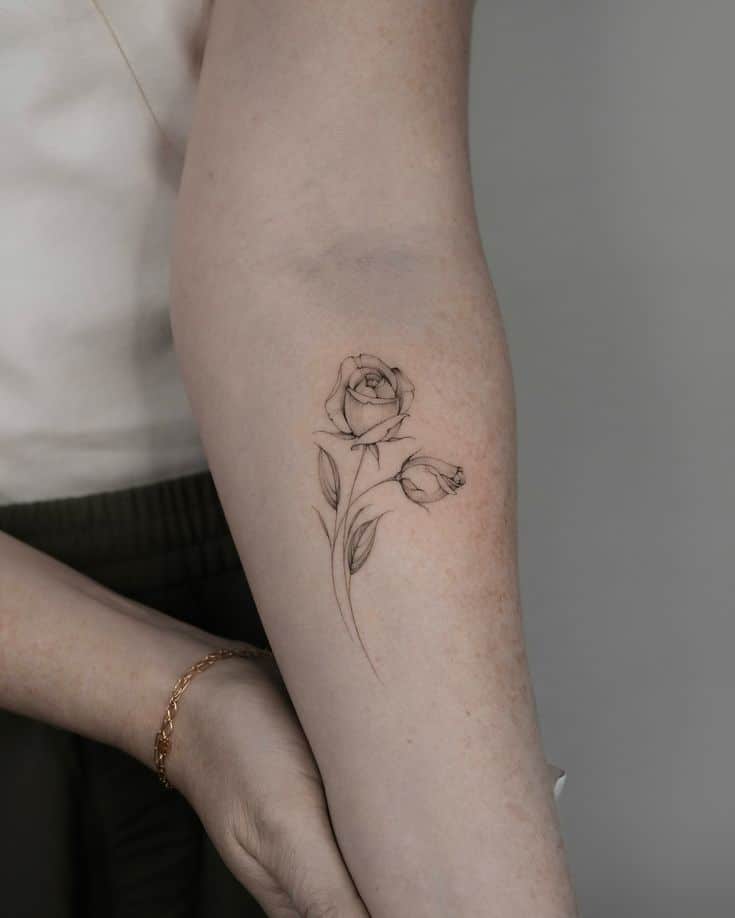
Digital Design and Stenciling
Before any ink touches your skin, the final design will be prepared as a stencil.
- Precision: Realistic stencils are often highly detailed, sometimes more intricate than traditional tattoo stencils.
- Placement Test: The artist will place the stencil on your skin, allowing you to see exactly how the tattoo will sit on your body. This is the last opportunity to make minor adjustments to size or position.
- Understanding Tattoo Outlines: Even for realism, the initial outlines or guides are essential for the artist to maintain accuracy during the tattooing process.

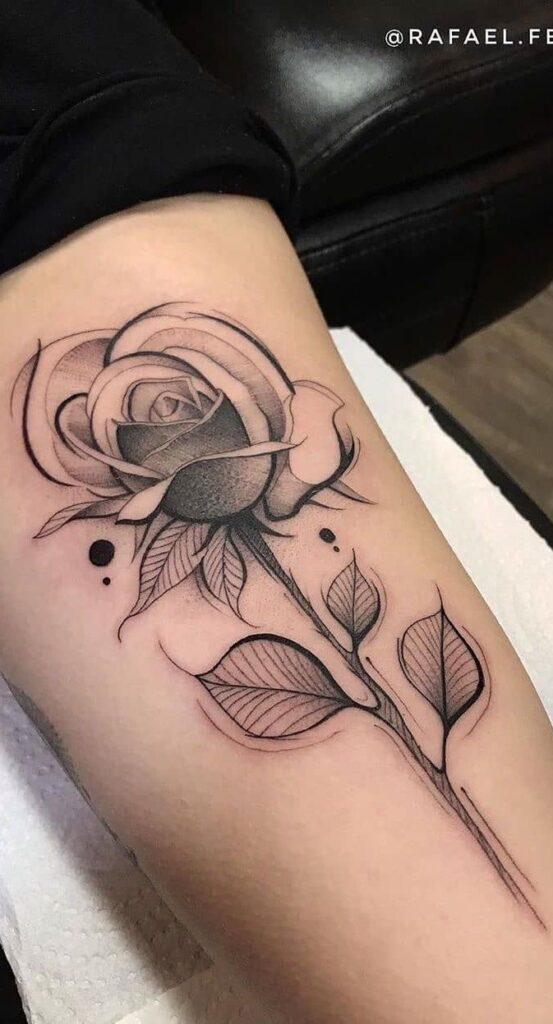
Placement Considerations
The chosen body part significantly impacts the final look and longevity of your realistic rose.
- Surface Area: Larger, flatter areas like the thigh, back, or upper arm provide ample canvas for detail.
- Movement: Consider how the skin moves and stretches. A hyperrealistic image might distort more on a joint or highly flexible area.
- Sun Exposure: Areas frequently exposed to the sun (forearms, calves) are more prone to fading, requiring diligent sun protection.
- Pain Tolerance: Some areas are notoriously more painful than others. This is a factor for multi-session realistic pieces.
Think of your skin as a unique canvas. Just as a designer might use best 5 free resources for designers to perfect a visual, your artist uses their skills to best utilize your body’s natural contours.
Understanding the Tattooing Session
The actual tattooing process for a realistic rose is often intensive, requiring patience from both you and your artist.
Preparation
Prior to your appointment, ensure you are well-prepared:
- Rest: Get a good night’s sleep.
- Hydrate and Eat: Stay hydrated and eat a substantial meal beforehand to maintain blood sugar levels.
- Avoid Alcohol/Caffeine: Refrain from alcohol and excessive caffeine as they can thin your blood and increase sensitivity.
- Comfortable Clothing: Wear loose, comfortable clothing that allows easy access to the tattoo area.
- Moisturize: Moisturize the area for a few days leading up to the appointment to make the skin more receptive.

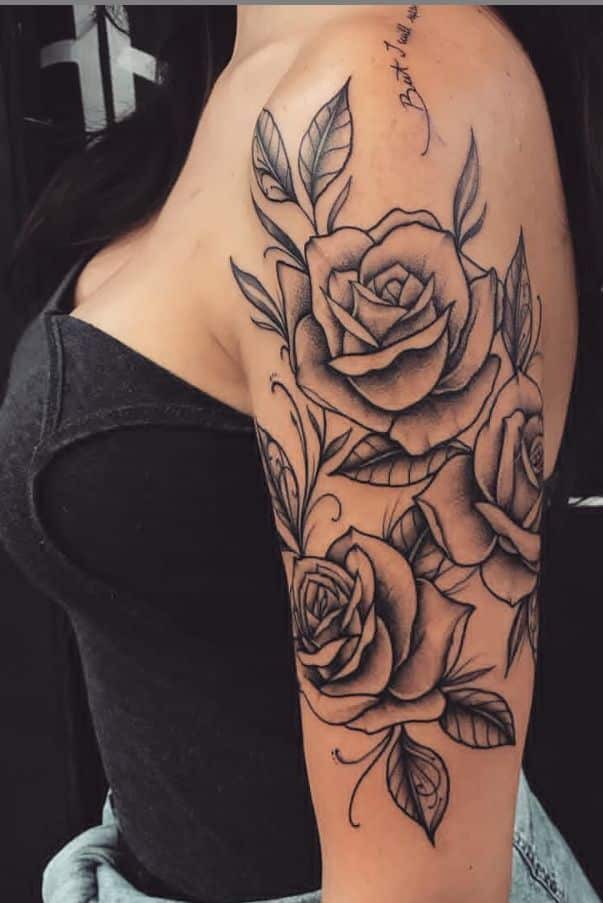
Pain Management
Tattoos are inherently painful. The duration and intensity of realistic pieces mean you should be prepared for prolonged discomfort.
- Pain Threshold: Everyone’s pain tolerance differs.
- Numbing Creams: Some artists allow topical numbing creams, but discuss this with them beforehand as it can sometimes affect the skin’s texture or how it takes ink.
- Breaks: Don’t hesitate to ask for short breaks if you need to stretch, hydrate, or use the restroom.
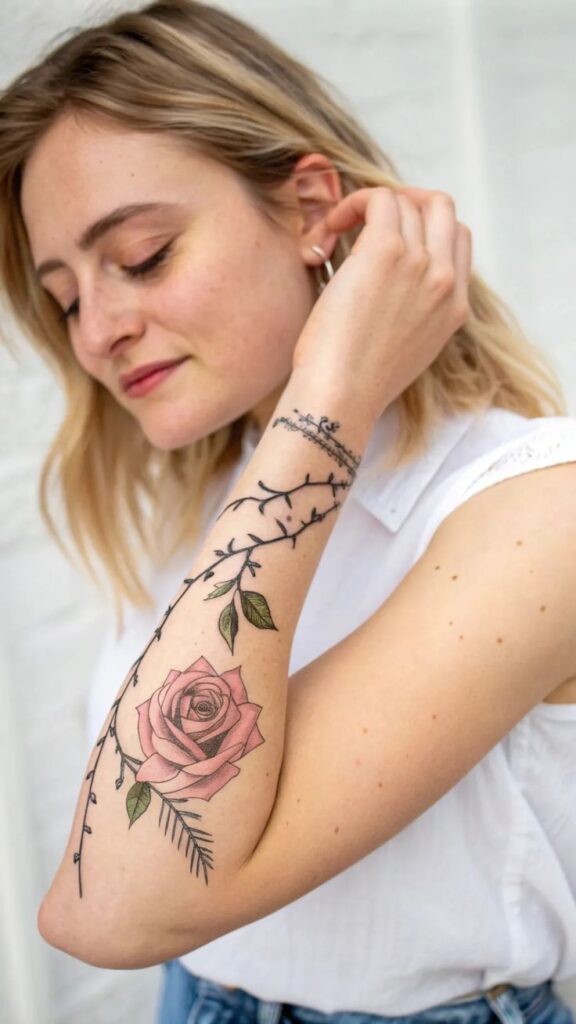
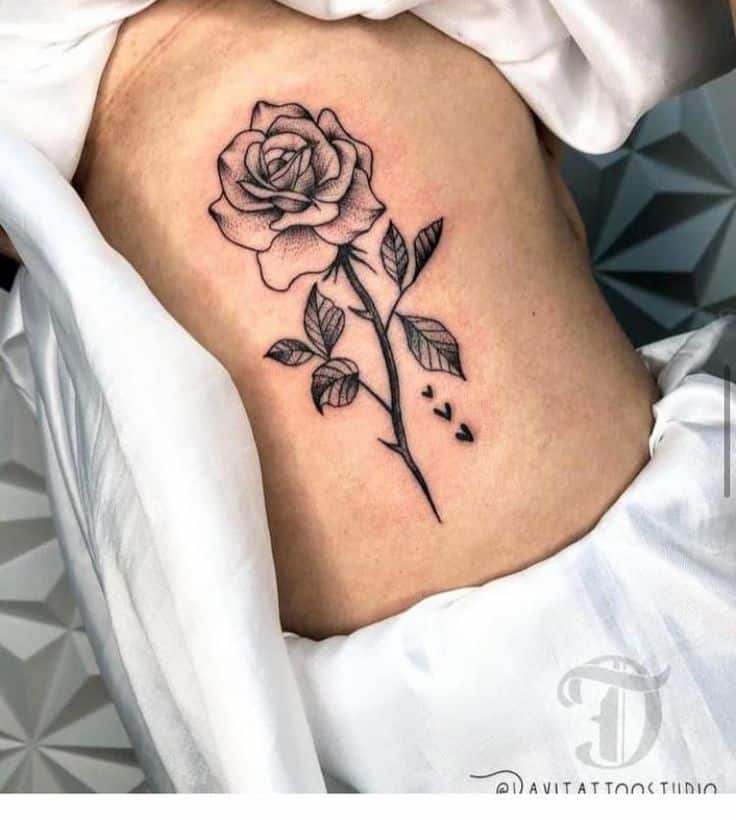
Session Length and Multiple Sessions
A realistic rose tattoo is rarely completed in a single session.
- Hours of Work: Each session can last anywhere from 3 to 8 hours, depending on the artist’s style and your endurance.
- Multiple Appointments: Expect 2-4 sessions, sometimes more, especially for larger or highly intricate pieces. These sessions are usually spaced weeks apart to allow for initial healing.
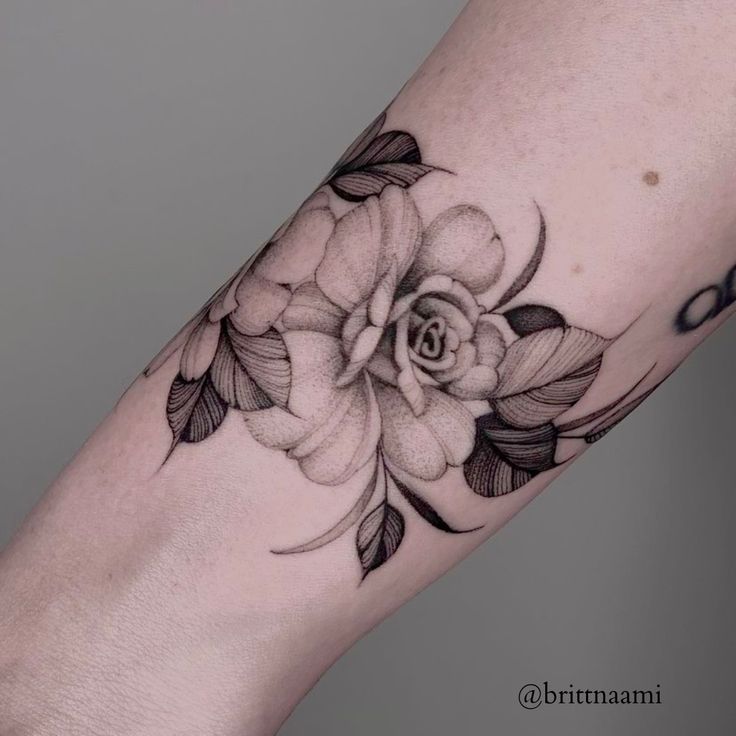
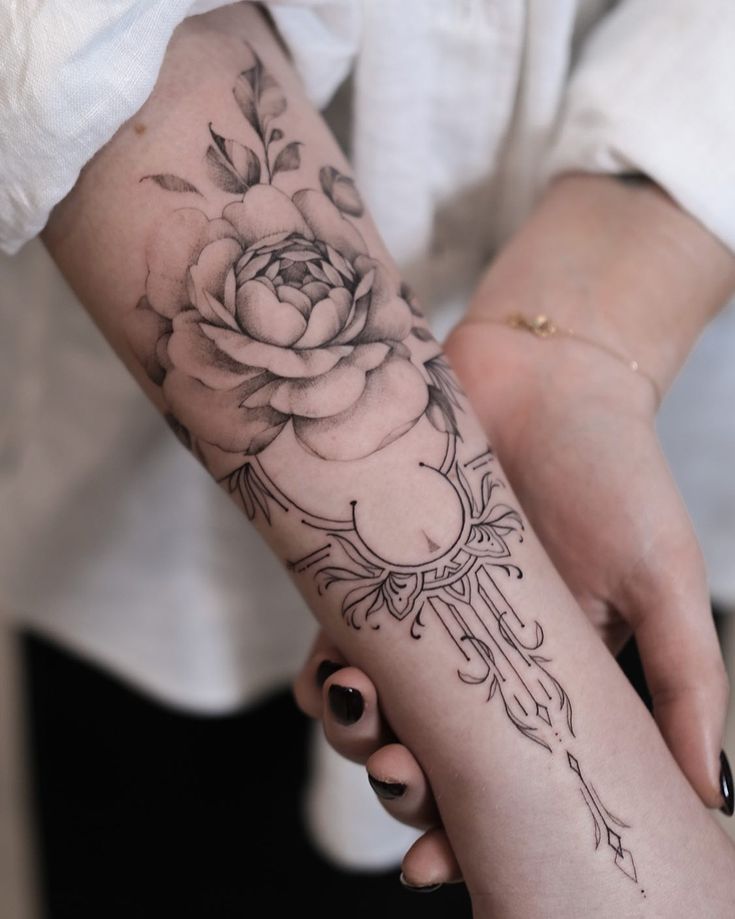
Artist’s Technique
During the session, observe (if comfortable) the artist’s meticulous process:
- Layering: Realism often involves layering ink, starting with lighter shades and gradually building up darker tones and details.
- Needle Selection: Artists use a variety of needle configurations (liners, shaders, magnums) to achieve different effects, from fine details to smooth blending.
- Patience and Focus: The artist will work with extreme focus, often for hours without interruption, to ensure every detail is perfect.
Aftercare: Preserving Your Art for a Lifetime
The quality of your realistic rose tattoo isn’t solely dependent on the artist’s skill; proper aftercare is equally vital for its longevity and vibrancy.
Immediate Aftercare
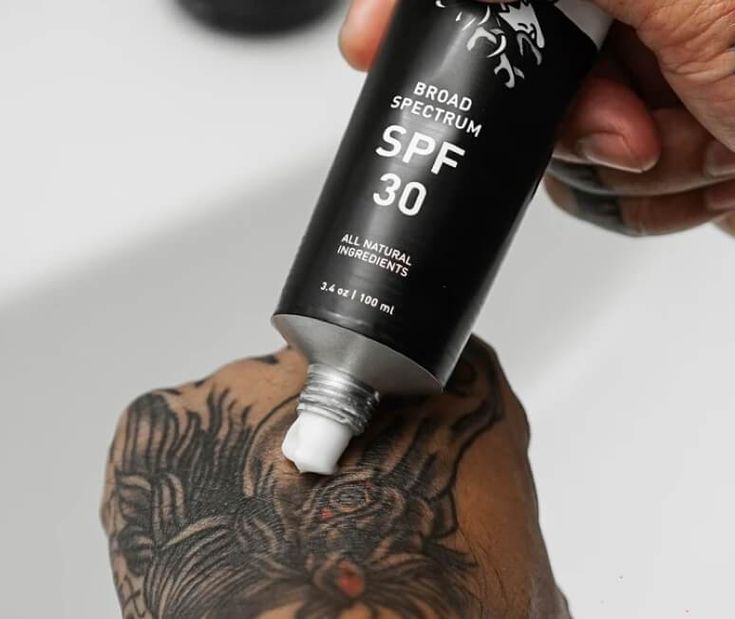
Follow your artist’s specific instructions diligently. General guidelines include:
- Bandaging: Keep the initial bandage (often cling film or a breathable second-skin type) on for the recommended period.
- Gentle Cleaning: Wash the tattoo gently with unscented, antibacterial soap and lukewarm water, pat dry with a clean paper towel.
- Moisturizing: Apply a thin layer of unscented, tattoo-specific moisturizer or ointment several times a day. Do not over-moisturize.
- Avoid Submersion: No swimming, baths, or hot tubs during the initial healing phase (usually 2-4 weeks). Showers are fine.
- No Picking/Scratching: Resist the urge to pick at scabs or scratch itchy skin.
Long-term Care

Your realistic rose tattoo is an investment. Protect it for years to come:
- Sun Protection: This is perhaps the most critical long-term care step. UV rays are the biggest enemy of tattoos, causing colors to fade and details to blur. Always apply a high SPF (30+) sunscreen to your tattoo when exposed to the sun.
- Hydration: Keep your skin well-hydrated by drinking plenty of water and moisturizing regularly. Healthy skin means a healthier-looking tattoo.
- Avoid Harsh Chemicals: Be mindful of harsh soaps, exfoliants, or chemical peels directly on the tattoo.
- Weight Fluctuations: Significant weight gain or loss can potentially affect the appearance of a tattoo, especially on certain body parts.
Healing Process Stages
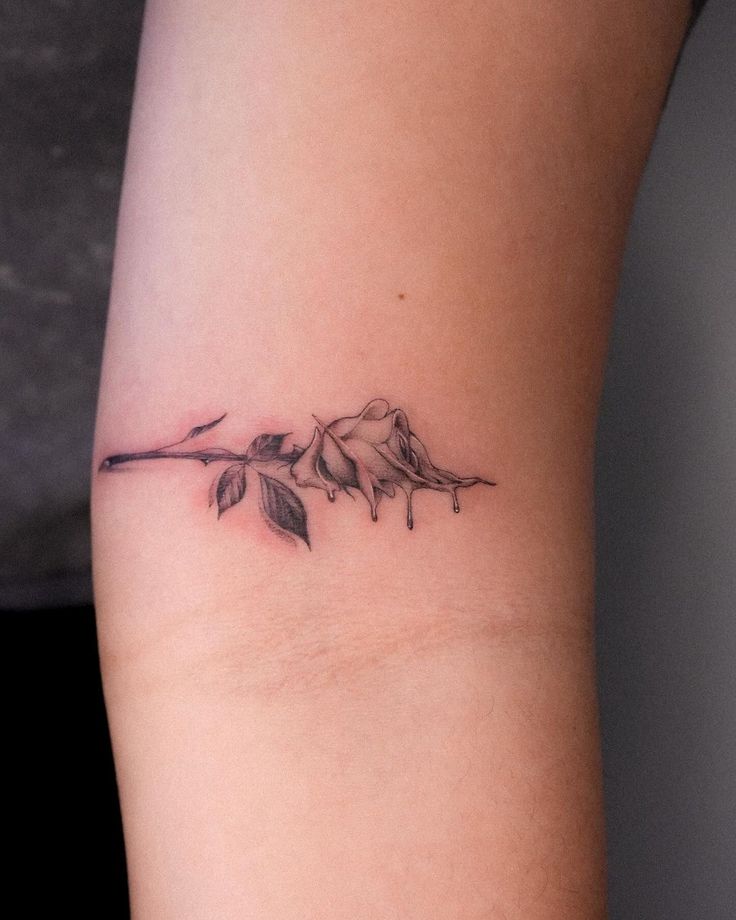
Understanding the typical healing stages will help you know what to expect:
- Days 1-3 (Inflammation): Redness, swelling, tenderness, possible oozing.
- Days 4-14 (Scabbing/Peeling): The tattoo will start to dry out, form thin scabs, and begin to peel like a sunburn. It may be itchy.
- Weeks 3-4 (Dullness): The tattoo may appear slightly dull or cloudy as the new layer of skin forms over it.
- Months 1-3 (Settling): The color and detail will gradually ‘bloom’ as the skin fully regenerates and the ink settles.
Full healing can take anywhere from 2 weeks to several months, depending on the individual and the tattoo’s size and placement.
Popular Styles and Variations of Realistic Rose Tattoos
While the core concept is realism, artists and clients often explore various sub-styles and added elements.
Black and Grey Realism
This classic approach uses only black ink, diluted to create various shades of grey, along with the negative space of the skin. It excels at capturing dramatic contrast, fine details, and a timeless, sculptural quality. Black and grey realistic roses often have a moody, profound aesthetic.
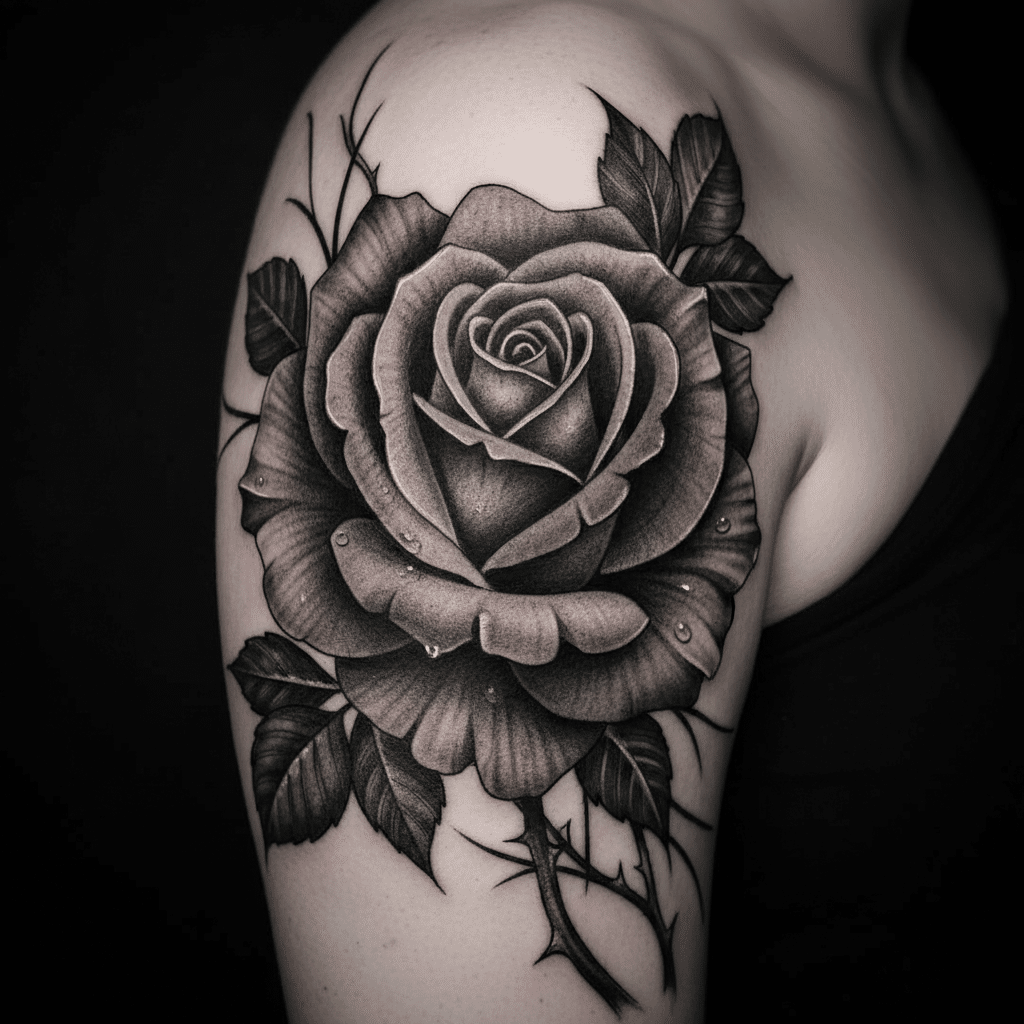

Full Color Realism
Here, the artist employs a wide palette of vibrant inks to replicate the exact colors of a real rose. This style demands an exceptional understanding of color theory and blending to achieve lifelike transitions and luminosity. The result is a tattoo that can be startlingly vibrant and immediate.
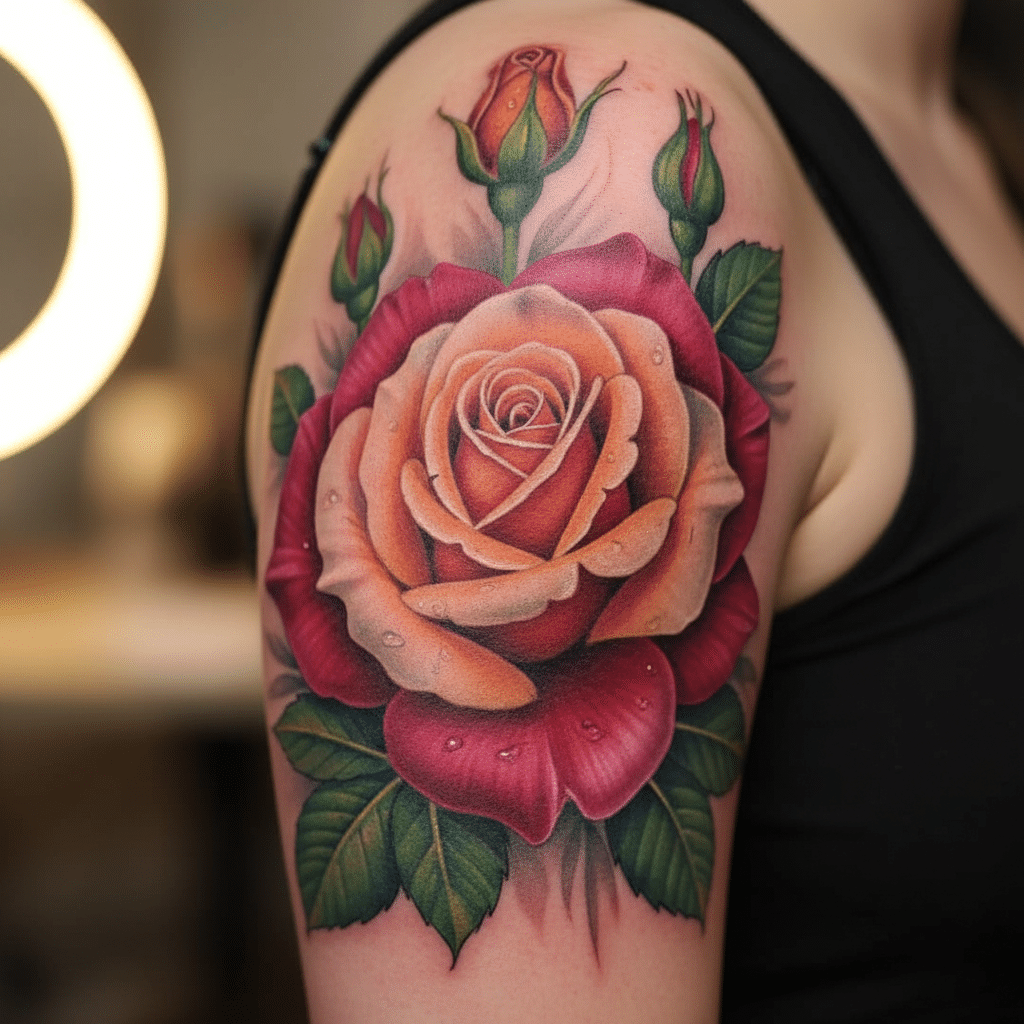
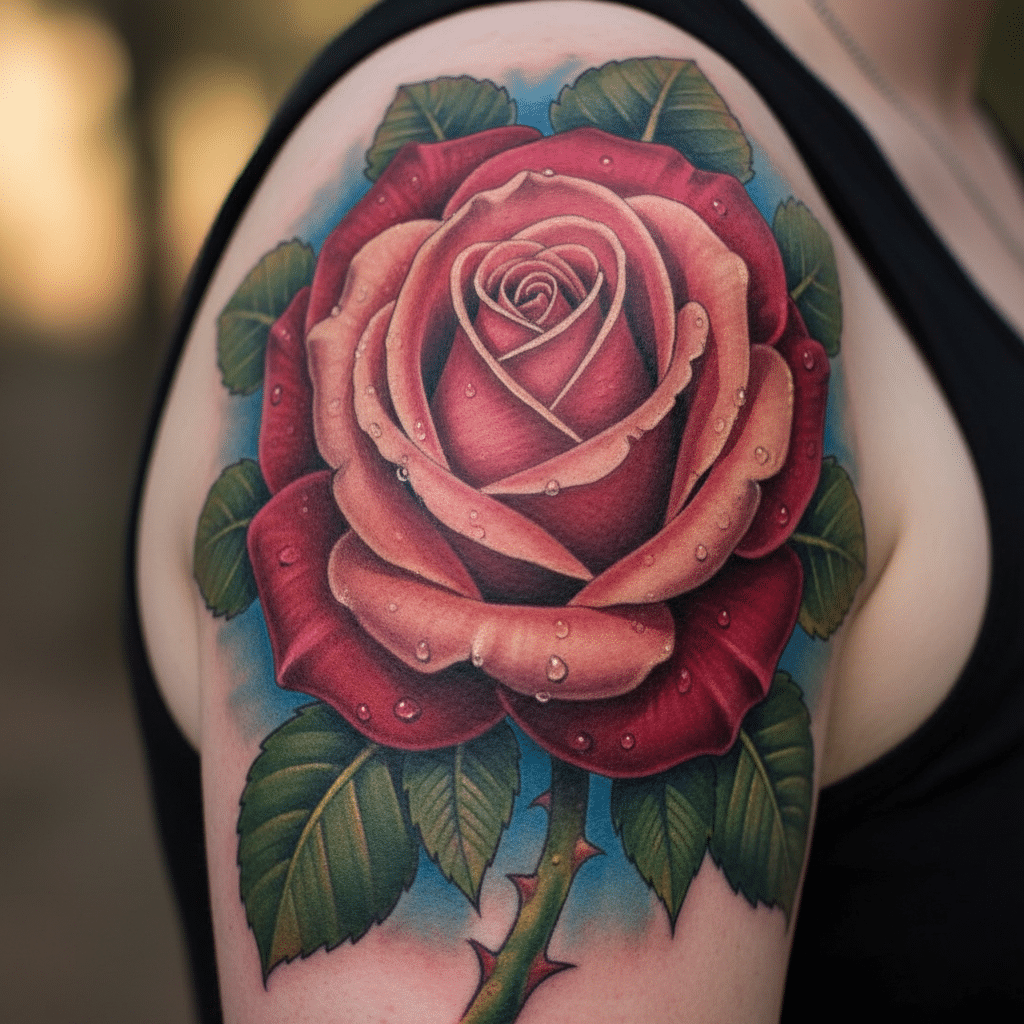
Single Rose vs. Bouquets/Scenes
- Single Rose: A powerful statement piece, often larger, allowing for immense detail on a single bloom.
- Rose Bouquets/Scenes: Incorporating multiple roses, buds, leaves, and sometimes other elements like vines, thorns, or accompanying flowers (e.g., baby’s breath) to create a more expansive narrative.
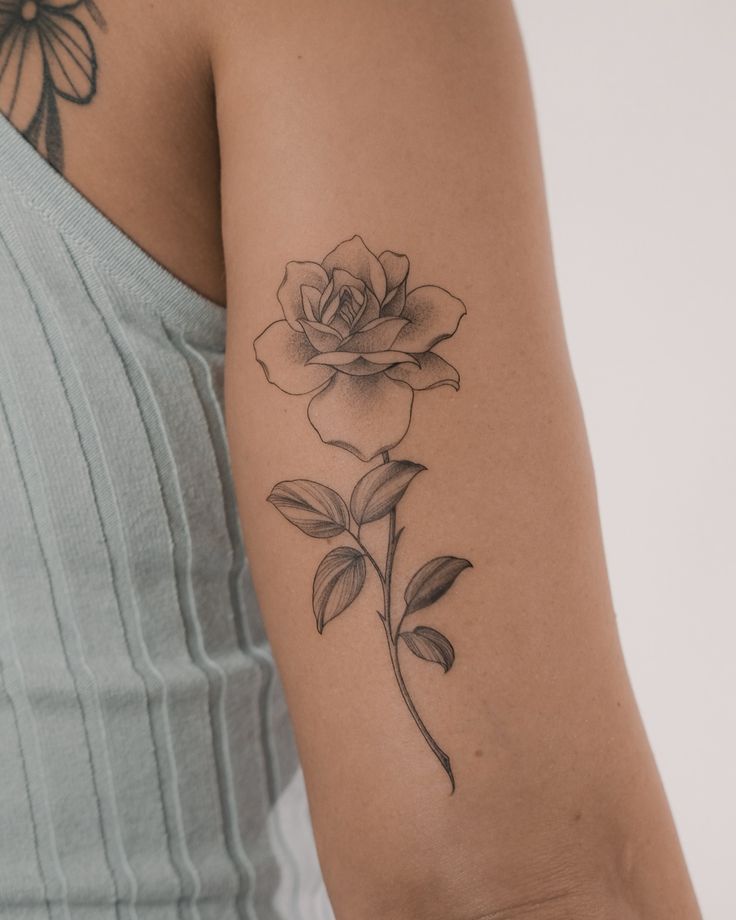
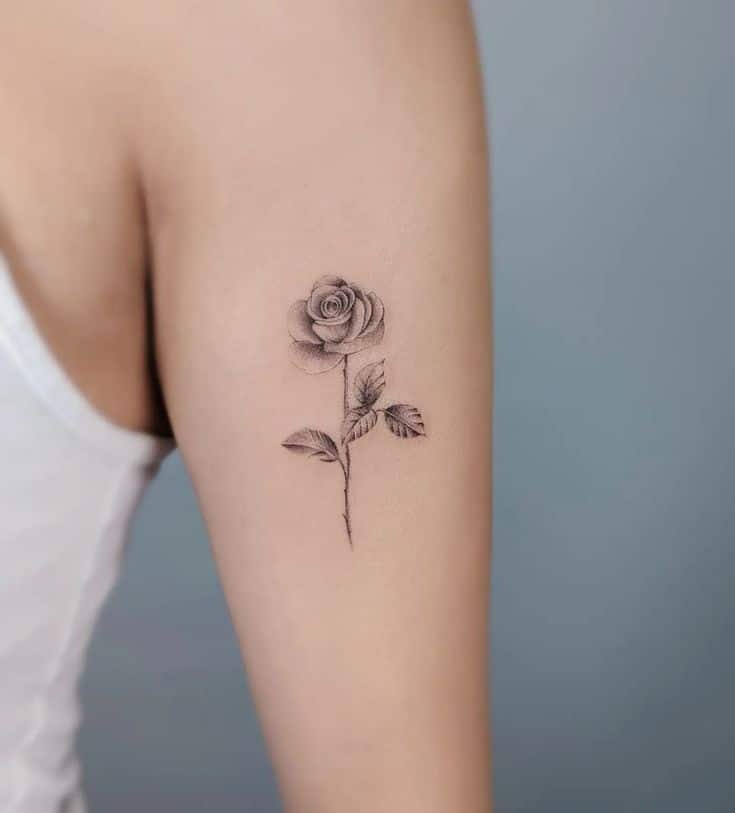
Adding Elements
To personalize your realistic rose, consider incorporating complementary elements:
- Water Droplets/Dew: Enhances the freshness and hyperrealistic effect.
- Insects: A ladybug, bee, or butterfly perched on a petal can add a dynamic, living touch.
- Clocks/Timepieces: Symbolizing the ephemeral nature of beauty or a specific moment.
- Skulls/Bones: A classic juxtaposition of life and death, beauty and decay.
- Abstract Backgrounds: A soft, blurred background can make the rose pop, akin to how moody interior design can create a specific atmosphere around a focal point.
- Text or Script: A subtle name or quote can be incorporated around the design.
The possibilities are vast, limited only by imagination and the artist’s creative prowess.
Cost and Investment
A realistic rose tattoo is a significant financial investment, and for good reason.
Factors Influencing Price
- Artist’s Reputation and Demand: Highly sought-after artists with years of experience and an exceptional portfolio command higher rates.
- Size and Detail: Larger tattoos with intricate details and multiple colors require more ink and many more hours of work.
- Number of Sessions: Multi-session pieces naturally incur higher overall costs.
- Location: Studio rates can vary geographically.
- Custom Design: A unique, custom realistic design will cost more than a flash piece.
Prices can range from several hundred to several thousand dollars for a substantial, high-quality realistic rose tattoo. Most artists charge an hourly rate or a daily rate for larger pieces.

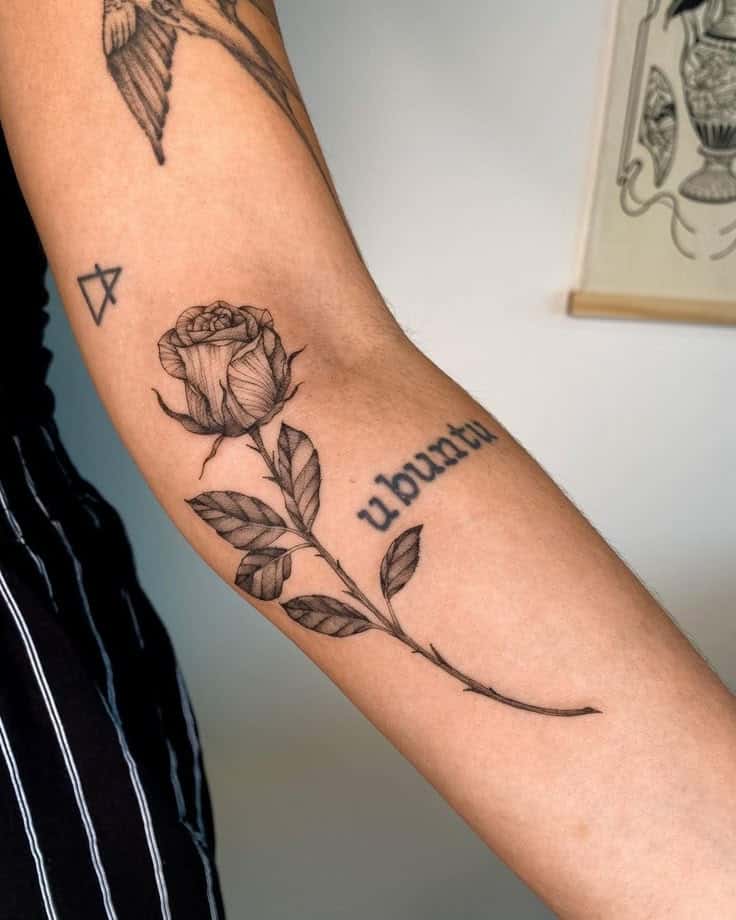
Why It’s Worth the Investment
Resist the temptation to “shop for a deal” on a realistic tattoo. This is a permanent piece of art on your body. Investing in a skilled, reputable artist ensures:
- Exceptional Quality: A breathtaking, lifelike tattoo that truly reflects your vision.
- Longevity: Proper technique and high-quality inks mean your tattoo will age gracefully and retain its detail for many years.
- Safety: A professional artist adheres to strict hygiene standards, minimizing health risks.
- Satisfaction: The pride of wearing a truly masterful piece of art.
Consider it an investment in a lifelong piece of art, much like investing in high-quality home furnishings that enhance your living space for years.
Conclusion
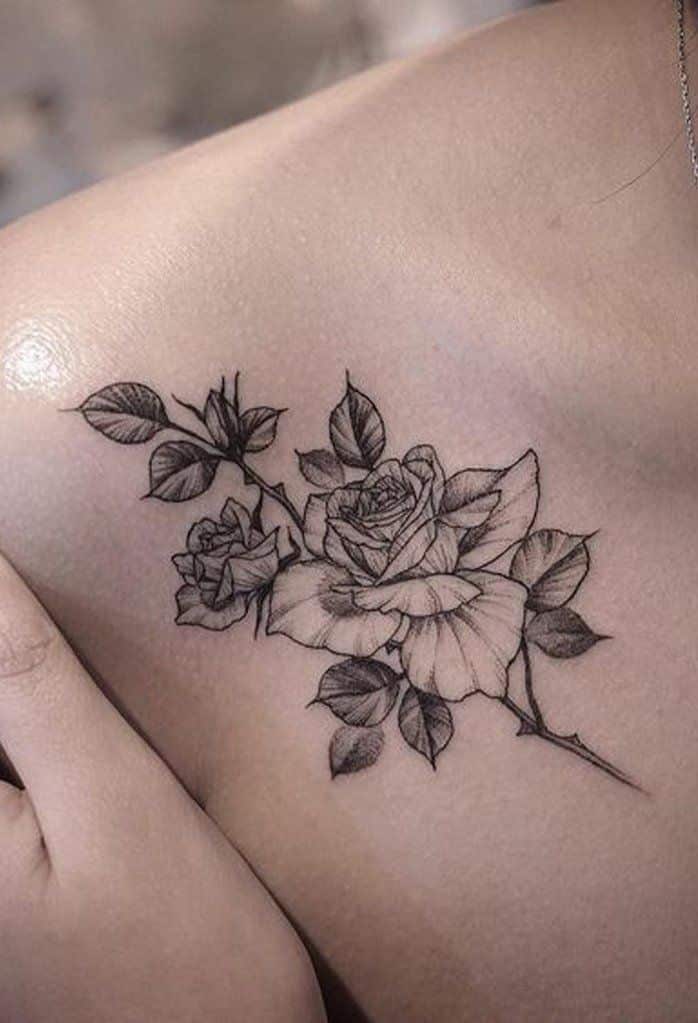

The realistic rose tattoo is more than just a trend; it is a timeless expression of art, symbolism, and personal identity. Its enduring appeal lies in its ability to transform a beloved flower into a living, breathing masterpiece on the skin. From the delicate curve of each petal to the interplay of light and shadow, every detail contributes to an illusion of reality that captivates and inspires.
Embarking on the journey to acquire a realistic rose tattoo requires careful consideration, thorough research, and a profound respect for the artistry involved. By understanding the intricate elements that define realism, diligently selecting an experienced and specialized artist, actively participating in the design process, and committing to meticulous aftercare, you ensure that your tattoo remains a vibrant, cherished emblem for a lifetime. This is not merely an aesthetic choice; it is an investment in a piece of yourself, a testament to beauty, resilience, and the power of ink to tell a story. Choose wisely, care diligently, and wear your realistic rose tattoo with pride—a masterpiece blooming eternally on your canvas.
- 34shares
- Facebook0
- Pinterest34
- Twitter0

